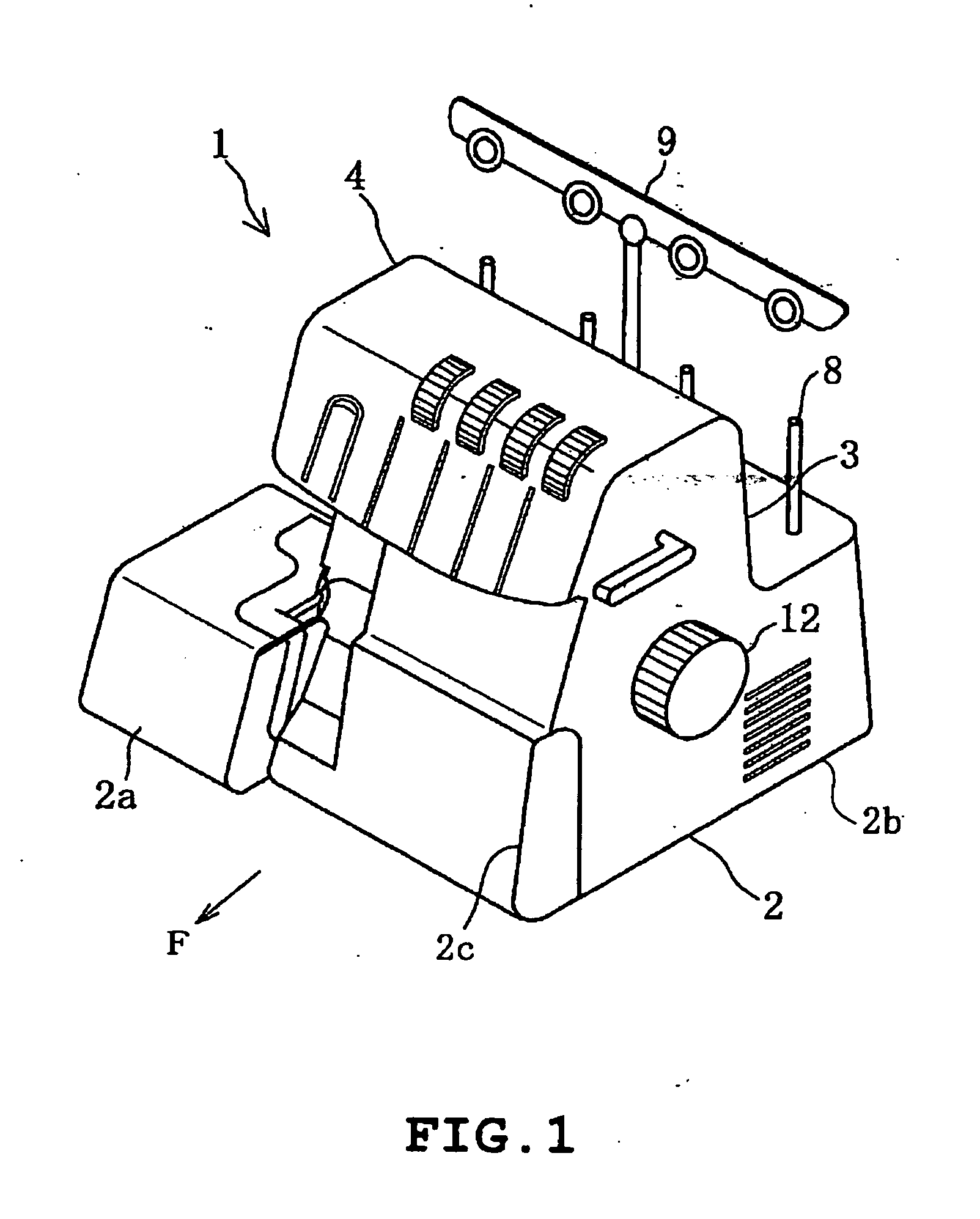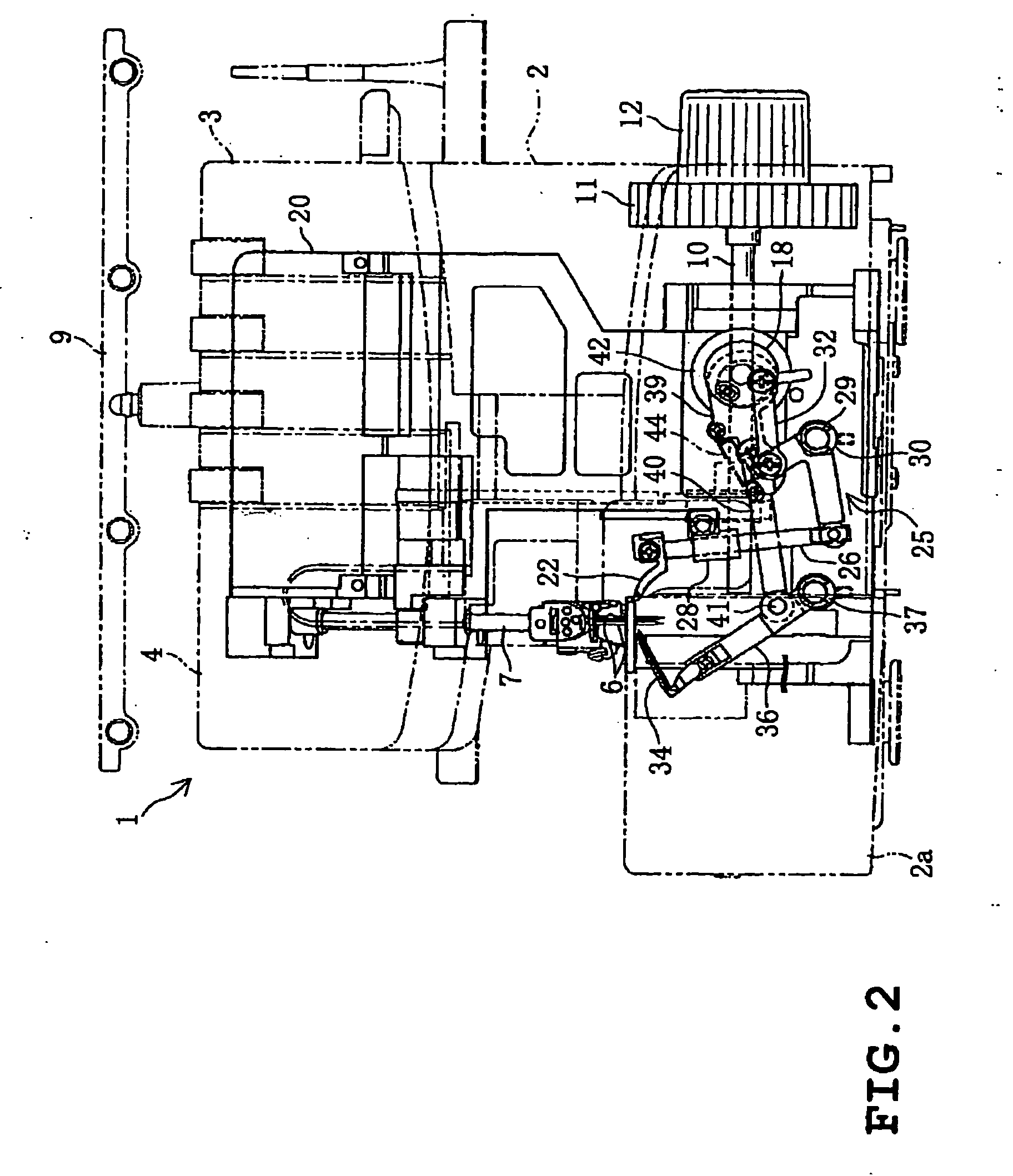Overlock sewing machine
a sewing machine and overlock technology, applied in the direction of sewing machines, sewing apparatus, sewing machine control devices, etc., can solve the problems of increasing the cost and the overall size, requiring laborious and troublesome installation and timing adjustment, and being relatively troublesome for users, so as to achieve the effect of simplifying the mechanism and facilitating external thread engagemen
- Summary
- Abstract
- Description
- Claims
- Application Information
AI Technical Summary
Benefits of technology
Problems solved by technology
Method used
Image
Examples
Embodiment Construction
[0033] One embodiment of the present invention will be described hereinafter with reference to the drawings. Description which will be given hereinafter is to be construed with an understanding that the direction indicated by the arrow F in the drawings such as FIGS. 1 and 3 is the front side.
[0034] An overlock sewing machine 1, as shown in FIGS. 1 to 3 is integrally provided with a bed 2 having a free bed 2a with the left end thereof protruding in the forward direction, a pillar 3 extending upward from the bed 2, and an arm 4 extending in the horizontal direction from the upper portion of the pillar 3.
[0035] As shown in FIG. 2, the arm 4 has a needle bar 7 inclined toward the front and having, for example, two sewing needles 6 in the lower end thereof. The needle bar 7 is vertically moved by a rotation of the main shaft 10 via a drive mechanism not shown. Also, though neither of which are shown, the arm 4 has a presser foot and a vertical drive mechanism therefor, a thread take-u...
PUM
 Login to View More
Login to View More Abstract
Description
Claims
Application Information
 Login to View More
Login to View More - R&D
- Intellectual Property
- Life Sciences
- Materials
- Tech Scout
- Unparalleled Data Quality
- Higher Quality Content
- 60% Fewer Hallucinations
Browse by: Latest US Patents, China's latest patents, Technical Efficacy Thesaurus, Application Domain, Technology Topic, Popular Technical Reports.
© 2025 PatSnap. All rights reserved.Legal|Privacy policy|Modern Slavery Act Transparency Statement|Sitemap|About US| Contact US: help@patsnap.com



